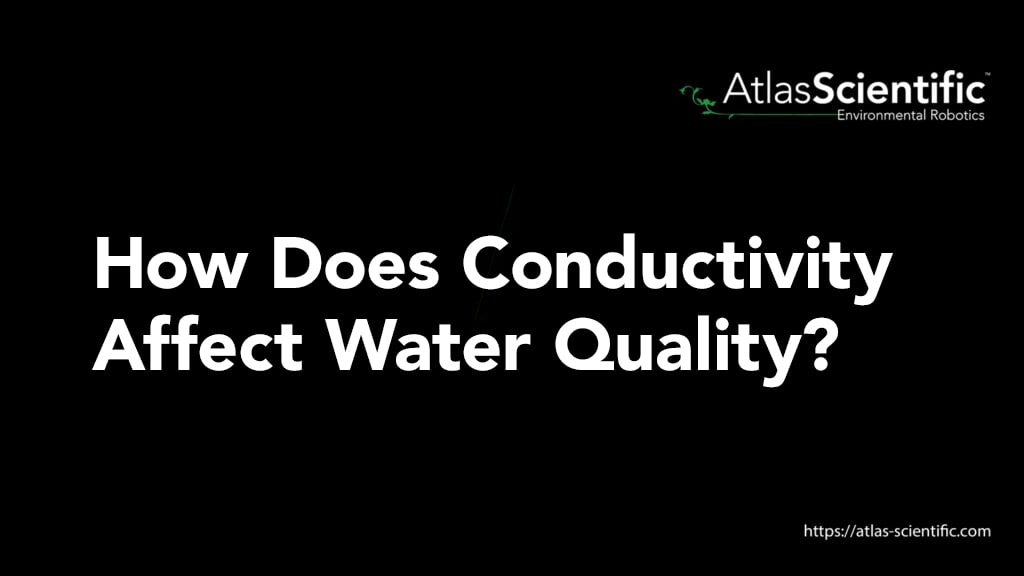Subtotal: $329.99

How To Reduce TDS Of Water?
Reverse osmosis is still a very good and popular way to reduce TDS, but there are many alternatives that might be better for your particular evil
Product Categories

Conductivity is a vital parameter when determining water quality. As salinity and temperature increase, conductivity also increases, which can have a negative effect on the quality of water. This is because the higher the conductivity, the higher amount of impurities (dissolved substances, chemicals, and minerals) are in the water.
Conductivity is one of the most useful and frequently tested parameters when it comes to determining water quality. It is important for a range of industries and applications such as measuring the quality of drinking water and in aquaculture systems.
Conductivity measures the ability of a solution to conduct electricity. Conductivity values depend on the ionic strength of the solution, the ions present, and the ion concentration.
Conductivity can tell us a lot about water quality. Drastic changes in conductivity can be used as an indicator of poor water quality from runoff or other sources of pollution.
As salts and other inorganic chemicals dissolve in water, they break down into ions. When ions and dissolved salts are present in the water, they increase the ability to conduct electricity, therefore as salinity increases in water, so does the electrical conductivity (EC). Pure (distilled) water is a good example of a poor conductor because it does not contain any dissolved salts that provide ions to conduct electricity.
Water contains certain elements or chemicals that affect water quality, these include sodium, magnesium, calcium, and chloride. As salinity and temperature affect conductivity, it is also important to measure these parameters; as salinity and temperature increase, conductivity also increases.
When an increase or decrease is detected on a conductivity meter, it can indicate pollutants, affecting the quality of the water. When a sewage leak or agricultural runoff occurs, it increases the EC because of additional ions such as chloride, phosphate, and nitrate, whereas, events such as an oil spill decrease the EC, however, both have a negative impact on water quality.
Conductivity is dependent on temperature and salinity, both of which play a part in water quality and the survival of aquatic life.
As water temperatures fluctuate daily, so can the conductance level. When water becomes stratified due to temperature influencing the water density, the conductivity level in the stratified water can vary at different depths.
Changes in water flow from rivers and dams, and water levels from tidal stages and evaporation also affect water quality, as conductivity and salinity levels fluctuate.
As aforementioned, when conductivity increases in the water, so does the salinity. As salinity affects the solubility of dissolved oxygen (DO) it is critical to measure conductivity alongside salinity when determining the water quality. The higher the salinity and conductivity levels, the lower the DO levels in the water, which can cause issues for some aquatic plants and animals. Some aquatic life can tolerate salinity changes, however, most cannot, and will either die or become seriously sick.
Increased salinity levels are also bad for humans because it affects the quality of drinking water and makes it expensive to treat.
Measuring conductivity is essential to determine water quality in many industries and applications.
It is not only significant to test conductivity for commercial industries. If you are lucky enough to have a swimming pool in your home, you can use EC probes to identify total dissolved salts/solids (TDS) levels in the water. It is critical to monitor TDS levels in swimming pools as high TDS levels can over saturate pools, leading to water quality issues.
It is electrical conductivity that measures the ability of a material to transmit an electrical current over a certain distance, usually measured in Siemens (S) per distance, using a conductivity meter.
When the probe attached to the conductivity meter is inserted into the water, an electrical current flows between the two electrons (amperometric conductivity meters) inside the probe, set apart at a specific distance. The ion concentration in the water is what determines if the conductance is high or low. Some conductivity probes contain four-electrodes, also known as potentiometric conductivity meters. Two electrons measure the current in the solution, and the other electrons maintain a constant current, acting as a reference.
Whichever industry or application you are working with, measuring conductivity will tell you if you need to treat the water to improve the water quality.
Conductivity is closely related to temperature and salinity, therefore, it is important to test all three parameters, because they can affect water quality. As salinity and temperature increase, conductivity also increases, which can have a negative effect on the quality of water.
By measuring conductivity using a conductivity meter, you will be able to see if the water is polluted and if you require adding any treatments.
If you would like to learn more about conductivity, or what other water quality testing kits we have to offer, do not hesitate to contact our world-class team at Atlas Scientific.







Reverse osmosis is still a very good and popular way to reduce TDS, but there are many alternatives that might be better for your particular evil

Wastewater chlorination adds chlorine compounds to wastewater that produce “free chlorine,” which destroys pathogens by damaging cell membranes, disrupting cellular respiration, and rendering enzymes non-functional.